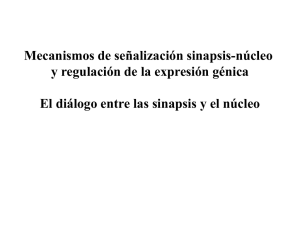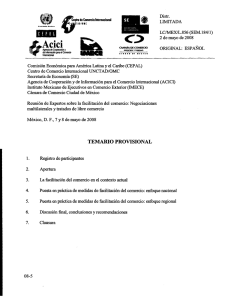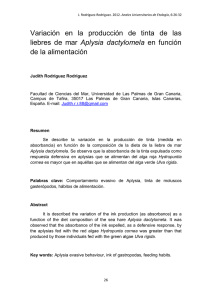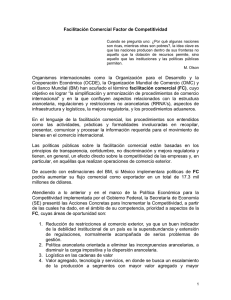Sensibilización en Aplysia.pdf
Anuncio
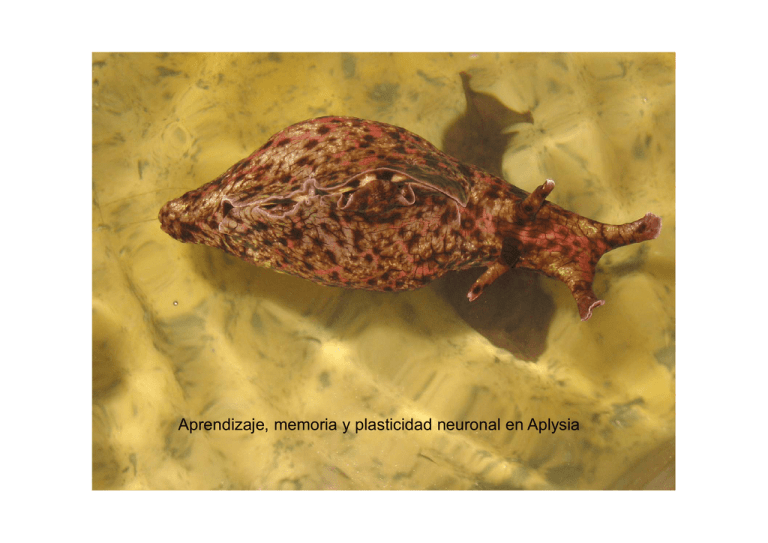
Aprendizaje, memoria y plasticidad neuronal en Aplysia Eric Kandel Thomas Carew HABITUACIÓN EN APLYSIA HABITUACIÓN EN APLYSIA The cellular mechanisms of habituation have been investigated in the gill-withdrawal reflex of the marine snailAplysia. A. A dorsal view of Aplysia illustrates the respiratory organ (gill), which is normally covered by the mantle shelf. The mantle shelf ends in the siphon, a fleshy spout used to expel seawater and waste. A tactile stimulus to the siphon elicits the gill-withdrawal reflex. Repeated stimuli lead to habituation. B. This simplified circuit shows key elements involved in the gill-withdrawal reflex as well as sites involved in habituation. In this circuit about 24 mechanoreceptors in the abdominal ganglion innervate the siphon skin. These glutaminergic sensory cells form synapses with a cluster of six motor neurons that innervate the gill and with several groups of excitatory and inhibitory interneurons that synapse on the motor neurons. (For simplicity, only one of each type of neuron is illustrated here.) Repeated stimulation of the siphon leads to a depression of synaptic transmission between the sensory and motor neurons as well as between certain interneurons and the motor cells. HABITUACIÓN EN APLYSIA SENSIBILIZACIÓN EN APLYSIA SENSIBILIZACIÓN EN APLYSIA Estímulo test Estimulo sensibilizador SENSIBILIZACIÓN EN APLYSIA Memoria / comportamiento Aumento de la respuesta: Sensibilización de Corto término (STS) Neuronal / sináptico. Aumento del potencial post-sináptico excitatorio: Facilitación de corto término (STF) Facilitación de término intermedio (ITF) Depende se síntesis de proteínas pero no de transcripcion Depende de actividad persistente de PKA Facilitación de largo término (LTF) Depende se síntesis de proteinas Depende de transcripción vía cAMP (CREB) CREB se une a la secuencia consenso CRE Facilitación de largo término (LTF) Depende se síntesis de proteinas Depende de transcripción vía cAMP (CREB) CREB se une a la secuencia consenso CRE Gen temprano: CAATT enhancer binding protein (C/EBP) C/EBP se une a la secuencia ERE CREB se une a la secuencia CRE Ventana temporal del efecto de la inyección del oligonucleótido ERE Facilitación de largo término (LTF) Depende se síntesis de proteinas Depende de transcripción vía cAMP (CREB) Depende de transcripción vía C/EBP Memoria Intermedia en Aplysia Facilitación de término intermedio (ITF) Depende se síntesis de proteínas pero no de transcripcion Depende de actividad persistente de PKA ERK se activa a los 45 min La activación de ERK es necesaria para que el 2do ensayo sea efectivo Contexto molecular para el espaciamiento óptimo Condicionamiento en Aplysia. CS estímulo táctil. US shock Reforzamiento sináptico tipo LTP en Aplysia
